2003
Type of resources
Available actions
Topics
Keywords
Contact for the resource
Provided by
Years
Formats
Representation types
Update frequencies
Scale
-
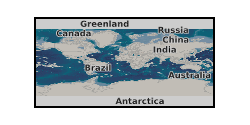
EU is required to reduce its CO2 emissions by 8% by 2008-2012, later deeper cuts are foreseen. CO2 underground storage is one of the few options that can meet these obligations. The present project investigates four new potential cases for CO2-reservoirs, mainly on land. It will continue reservoir simulations and study geochemical reactions to develop final-fate prediction models. This will be supported by new seismic observations. At the same time gravimetrics is introduced as a new method better suited on land. This proposal builds directly on the Thermie/5FP SACS2 project results, which involved monitoring and modelling the injection of CO2 into the Utsira Sand aquifer, at Sleipner gas field, offshore Norway.
-
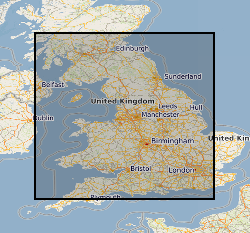
This dataset comprises data from Wessex Archaeology surveys which were conducted over various wreck sites between 2003 and 2010. Three of these datasets were acquired in English waters, one in Welsh waters and one in Scottish waters. The geology and geophysics component of the data are archived by British Geological Survey (BGS) in the Marine Environmental data and Information Network (MEDIN) Data Archive Centre (DAC) for Geology and Geophysics. The data include multibeam echosounder, single-beam echosounder, sidescan sonar, sub-bottom profiler, magnetometer, and geological data (vibrocore logs and photos). Data were also provided to other archive centres as appropriate - UKHO (bathymetry), Royal Commission Ancient and Historic Monuments Wales (geophysics), Royal Commission on the Ancient and Historical Monuments of Scotland (geophysics and diving/ROV), Archaeology Data Service (diving/ROV). Although generated for archaeological purposes, these high quality and resolution data are capable of re-use by marine surveyors and scientists from a range of different fields. Data are delivered via the BGS Offshore GeoIndex www.bgs.ac.uk/GeoIndex/offshore.htm and additional data are available on request enquiries@bgs.ac.uk.
-

This dataset comprises scanned images of the manuscript geological maps produced by the Survey geologists or other recognised geologists on County Series (1:10560) and National Grid (1:10560 and 1:10000) Ordnance Survey base maps. The collection also includes similar maps compiled from other sources. Currently the dataset contains over 35,000 scanned images. Original maps date from the 1860s, and cover surveys in Great Britain, scanning started in 2003.
-
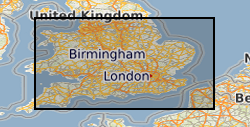
The Marine Aggregate Levy Sustainability Fund (MALSF) commissioned a series of Regional Environmental Characterisation (REC) surveys via the Marine Environment Protection Fund (MEPF) to develop understanding of submerged habitats and heritage in Britain. The aim was to acquire high quality data to enable broad scale characterisation of the seabed habitats, their biological communities and potential historic environment assets. The surveys were conducted in the following areas - Outer Bristol Chanel (2003 – 2005), Eastern English Channel (2005 – 2006), South Coast (2007 - 2010), Outer Thames (2007), East Coast (2008 - 2009), Humber (2008 - 2009). The Geology and Geophysics component of the data are archived by British Geological Survey (BGS) in the Marine Environmental data and Information Network (MEDIN) Data Archive Centre (DAC) for Geology and Geophysics. The data includes bathymetry, sidescan sonar, sub-bottom profiler, magnetometer, seabed video and photographs, Particle Size Analysis (PSA) data, vibrocore (logs and images). Data are delivered via the BGS Offshore GeoIndex www.bgs.ac.uk/GeoIndex/offshore.htm. Additional data are available on request enquiries@bgs.ac.uk. Other data types have been archived with the other MEDIN DACs as appropriate (UKHO DAC for bathymetry data and DASSH DAC for biological data). The MALSF ceased operation at the end of March 2011 (http://www.marinealsf.org.uk/).
-
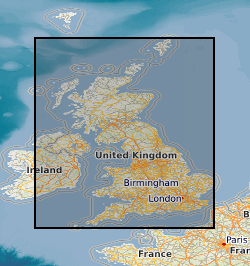
Scanned images of primary Geological Data resulting from deep underground coal exploration and exploitation. Collection of data includes reports, interpretations and records of research in British coalfield areas deposited by the Coal Authority. Data for past and current collieries and for future prospects. The majority of the collection was deposited with the National Geological Records Centre by the Coal Authority in July 2001. The collection includes borehole site plans, borehole logs , analyses and geophysical data etc. A large percentage of this data will eventually be linked to existing collections.
-

BGS LithoFrame models provide 3D geological characterisation for parts of the onshore and offshore UK at a range of scales. They present framework geological interpretation consistent with the stratigraphic framing schemes and scales used in BGS geological maps. Models have been constructed under a range of project activities and include local-scale superficial and bedrock models covering sites and focused study areas, medium-scale superficial and bedrock models covering many urban areas, transport corridors and smaller catchments, and regional-scale bedrock models covering large catchments, district areas, and geological basins. The 3D geological models have been constructed in a period between 2003 and 2018 and is managed by the 3D GeoModel project (National and International Geoscience).
-
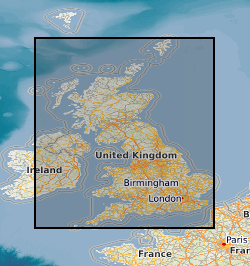
Data identifying landscape areas (shown as polygons) attributed with geological names and rock type descriptions. The scale of the data is 1:625 000, providing a simplified interpretation of the geology which may be used as a guide at a regional or national level, but should not be relied on for local geology. Onshore coverage is provided for all of England, Wales, Scotland, the Isle of Man and Northern Ireland. Superficial deposits are the youngest geological deposits formed during the most recent period of geological time, the Quaternary, which extends back about 2.58 million years from the present. They lie on top of older deposits or rocks referred to as bedrock. Superficial deposits were laid down by various natural processes such as action by ice, water, wind and weathering. As such, the deposits are denoted by their BGS Lexicon name, which classifies them on the basis of mode of origin (lithogenesis) with names such as, 'glacial deposits', 'river terrace deposits' or 'blown sand'; or on the basis of their composition such as 'peat'. Most of these superficial deposits are unconsolidated sediments such as gravel, sand, silt and clay. The digital data include attribution to identify each deposit type (in varying levels of detail) as described in the BGS Rock Classification Scheme (volume 4). The data are available in vector format (containing the geometry of each feature linked to a database record describing their attributes) as an OGC GeoPackage and are delivered free of charge under the terms of the Open Government Licence.
-
Data from the Along Track Scanning Radiometer (ATSR-1) instrument on the ERS-1 platform operational between 1991 and 1996. The ATSR is an imaging radiometer providing images of the Earth from space. The ERS (Earth Resources Satellite) program was funded by and operated by ESA and was the first main ESA EO data campaign. ATSR-1 was placed on the ERS1 platform and ATSR-2 was on the ERS-2 platform. The ATSR-1 and 2 instruments were followed by the Advanced Along Track Scanning Radiometer (AATSR) on the ENVISAT platform in 2002. The ATSR-1 instrument has been designed for exceptional sensitivity and stability of calibration, which are achieved through the incorporation of several innovative features in the instrument design. This design has, among other things, enabled the accurate measurement of sea surface temperature to an accuracy of +/- 0.3K. The design of the ATSR instrument incorporates a dual view made possible by the rotating scan mirror. There is a nadir view and then a subsequent along track view. These provide 2 images per scan and allow improved estimate of atmospheric attenuation. This coupled with the inclusion of consistent calibration using on-board black bodies allows for the collection of extremely radiometrically accurate data. The data are Level1 Ungridded Brightness Temperatures (UBT). The data are in SADIST-2 format and CEDA is the primary archive for this data. The UBT product provides scenes for both nadir and forward views with a swath width of 512km and a ground pixel distance of 1km. This dataset is superseded by the AATSR Multimission ATSR-1 data set that involved reprocessing this data with improved calibration and cloud masking and is available in a number of reprocessings so consistent with ENVISAT format data.
-
Data from the NIMROD system data describe rain-rate observations in Northern Europe taken by NIMROD, which is a very short range forecasting system used by the Met Office. Composite European data are available from April 2002 until present, collected by a network of rain radars at northern European stations. Radar images from the 15 C-band (5.3 cm wavelength) radars around Europe at 5 km resolution, are received by the Nimrod system at 15 minute intervals. Data products are available since April 2002, whilst image products are available from February 2003. Each file has been compressed and then stored within daily tar archive files. The precipitation rate analysis uses processed radar and satellite data, together with surface reports and Numerical Weather Prediction (NWP) fields. Europe has a network of 15 C-band rainfall radars and data form these are processed by the Met Office NIMROD system. The data files contain integer precipitation rates in unit of (mm/hr)*32. Each value is between 0 and 32767. In practice it is rare to see a value in excess of 4096 i.e. 128 mm/hr CEDA are not able to fulfil requests for data that are missing from this archive. The data may be available at a cost by contacting the Met Office directly with required dates. It is worth contacting CEDA first to check if the reason for the gap is already identified as being due to the data not existing at all.
-
Data were collected from the 30th of March 1999 to the 30th of March 2011 by the CAMRa (Chilbolton Advanced Meteorological Radar) at Chilbolton Observatory, Hampshire. The dataset contains measurements of radial component of wind velocity, radar frequency, differential phase shift and unfolded Doppler velocity. Plots are also available of differential phase shift, Doppler velocity, radar reflectivity factor, and linear depolarisation ratio.
 NERC Data Catalogue Service
NERC Data Catalogue Service